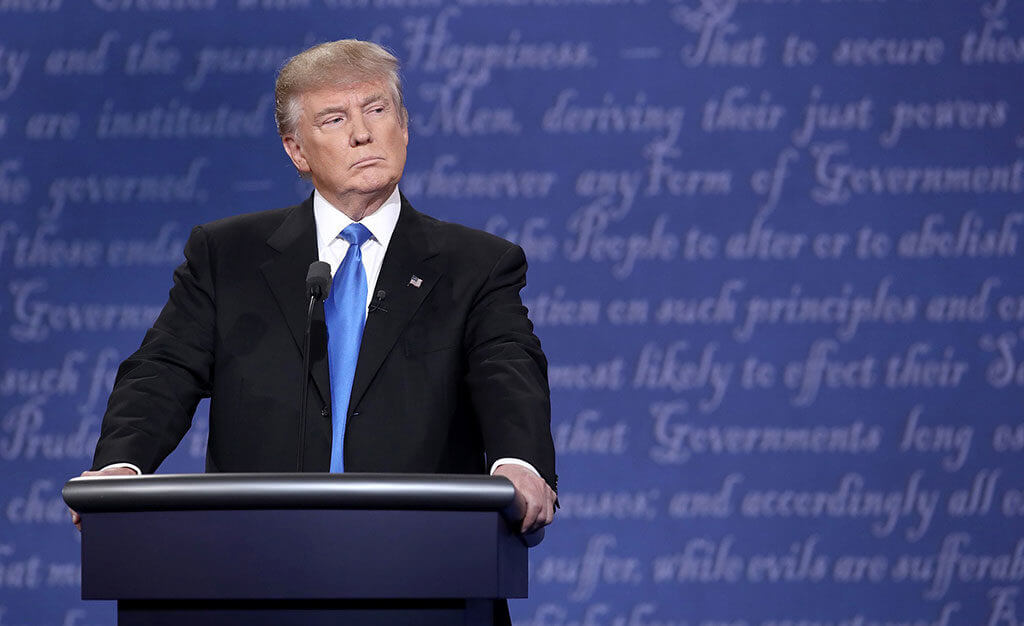
In response to a question in Monday night’s presidential debate about how to heal America’s racial divide, Donald Trump proposed that police stop and frisk more often. Moderator Lester Holt pointed out, “Stop and frisk was ruled unconstitutional in New York largely because it singled out black and Hispanic young men.”
“No, you’re wrong,” Trump said, arguing that the city “would have won on appeal.”
Nope. Mr. Holt was correct. Here’s what happened.
Profiling deemed unconstitutional
For over a decade, the police of New York City used the practice of detaining, questioning and searching people on the streets who officers deemed as suspicious. Court challenges led to the requirement that police fill out a form after each encounter so that later the stops could be reviewed. Even though police knew that a judge would be later reviewing the data, the information on those forms, once tabulated, drew a clear, disturbing picture of both demeaning racial profiling and the utter ineffectiveness of stop and frisk as a crime prevention strategy.
In a 2013 trial that spanned nine weeks, U.S. District Judge Shira Sheindlin listened to victims of stop and frisk, along with expert witnesses who analyzed that data and police defending the practice. In a lengthy, detailed 234 page decision (which I have read in its entirety), Judge Sheindlin held that New York’s stop and frisk violated the constitutional rights of the men and boys of color so often targeted.
Concluding that blacks and Hispanics were stopped and frisked excessively (blacks and Hispanics, 52 percent of New York City’s population, constituted 83 percent of police stops) and treated differently than whites once stops were made, Judge Scheindlin ordered a variety of fixes, including appointment of an independent monitor to oversee police practices. Though whites were more likely to be found with weapons or contraband (generally drugs), people of color were more likely to be subjected to force.
Pause for a moment on that point. Whites were more likely to be found with weapons or contraband. In fact, when stopped by the NYPD, white New Yorkers were almost twice as likely to be carrying a weapon than African Americans. Yet New York’s police disproportionately detained young men of color (exactly as Lester Holt said) and subjected them to force.
Suspiciously subjective
In addition, police were almost never right in their suspicions that certain people were criminals. Nearly nine in ten young men of color stopped in New York under its stop and frisk policy wereentirely innocent of any crime. Of the remaining handful found with contraband, the offenses were most often trivial—an open bottle of alcohol, for instance, or marijuana possession.
Do you have a legal question? Find answers for free in the Avvo Q&A forum
Overwhelmingly, then, just about all of the “suspicious” young men of color were simply ordinary citizens going about their day-to-day lives. Judge Scheindlin found the city to be “deliberately indifferent” to overwhelming racial bias in its police stops of citizens, even though officials had previously been warned of its unconstitutionality.
The decision is filled with sickening stories, like that of a thirteen-year-old African American boy, the son of a police officer, handcuffed and detained for six hours for allegedly reaching into his waistband, or the veteran who was punched and pepper sprayed after standing on a street corner with friends discussing Memorial Day plans.
New mayor kills law, lowers murder rate
Mayor Michael Bloomberg’s administration appealed the decision on the ground that murders would spike. Meanwhile New York City elected a new mayor, Bill De Blasio, who ran on an anti-stop and frisk platform; he dropped the appeal upon taking office.
Trump’s contention that “they would have won on appeal” is wishful thinking. It’s highly unlikely that the decision would have been reversed, as courts of appeals give great deference to trial court decisions generally and especially to thorough, sound legal analysis like Judge Scheindlin’s.
It’s also true that in the last three years, New York City crime rates, without stop and frisk, haveremained low. The law thus seems to be effective, and Bloomberg’s theory about spiking murder rates appears incorrect.
Police decry ‘negative effects’
Finally, apart from Donald Trump’s ignorance of constitutional law and the facts, let’s remember exactly when in the debate he brought up this sordid topic—in response to a question about healing the nation’s racial divide. This would be his solution? Exactly the opposite is true: detaining large numbers of young men of color—or anyone—on the streets sows anger and distrust. Even the International Association of Chiefs of Police agrees:
… ‘stop and frisk’ policies employed by police across the country have had negative effects…While these policies are clearly intended to reduce crime, the unintended consequences are often a reduction in perceptions of police fairness, legitimacy, and effectiveness. The lack of trust in the police, and their practices, can run so deep in segments of communities that interactions with law enforcement bring with them building anger and resentment over real and perceived procedural injustice and inequity.
Stop and frisk should be relegated to the historical dustbin of failed, racist policies, like Jim Crow laws and mass incarceration (which one day will be scrapped for the same reasons). That Mr. Trump would call for it demonstrates, at best, illiteracy with data, and at worst a fundamental misunderstanding of the criminal justice system and/or the constitution, not to mention a lack of empathy for how systemic racism hurts people of color, even in his own city.
The views and opinions expressed here are those of the author and do not necessarily represent those of Avvo.
Image courtesy of vanityfair.com

